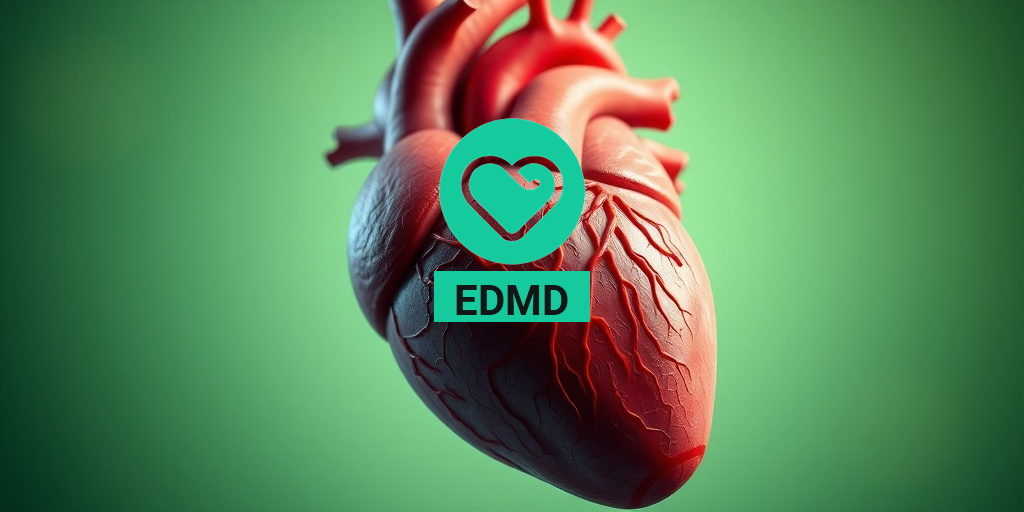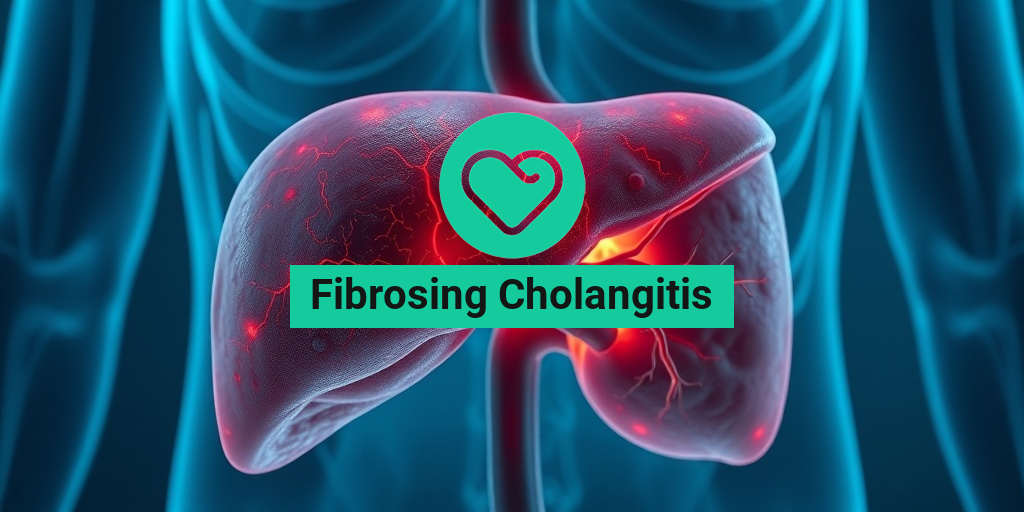“`html
What Is Borderline Personality Disorder?
Borderline Personality Disorder (BPD) is a complex mental health condition characterized by significant emotional instability, impulsive behaviors, and difficulties in interpersonal relationships. Individuals with BPD often experience intense emotions that can change rapidly, leading to challenges in maintaining stable relationships and a consistent self-image.
Understanding the Basics of BPD
BPD is classified as a personality disorder, which means it involves enduring patterns of behavior, cognition, and inner experience that deviate from cultural expectations. According to the DSM-5 (Diagnostic and Statistical Manual of Mental Disorders, Fifth Edition), the criteria for diagnosing BPD include:
- Fear of abandonment: Individuals with BPD often have an intense fear of being abandoned or rejected, leading to frantic efforts to avoid real or imagined separation.
- Unstable relationships: Relationships can be intense and unstable, swinging from idealization to devaluation.
- Identity disturbance: A markedly unstable self-image or sense of self is common, which can lead to sudden changes in goals, values, and career aspirations.
- Impulsivity: Engaging in impulsive behaviors that can be self-damaging, such as spending sprees, unsafe sex, or substance abuse.
- Emotional instability: Intense episodes of dysphoria, irritability, or anxiety lasting a few hours to a few days.
- Chronic feelings of emptiness: Many individuals report feeling empty or bored.
- Inappropriate anger: Difficulty controlling anger or experiencing intense anger that is disproportionate to the situation.
- Paranoia or dissociation: Stress-related paranoid thoughts or severe dissociative symptoms can occur.
The Causes of BPD
The exact cause of Borderline Personality Disorder is not fully understood, but it is believed to be a combination of genetic, environmental, and social factors. Some potential contributors include:
- Genetics: A family history of BPD or other mental health disorders may increase the risk.
- Brain structure and function: Differences in brain areas that control emotions and impulses may play a role.
- Trauma: Many individuals with BPD report a history of trauma, such as childhood abuse or neglect.
Borderline Personality Disorder Symptoms
Recognizing the symptoms of Borderline Personality Disorder is crucial for early intervention and effective treatment. While symptoms can vary widely among individuals, some common signs include:
Emotional Symptoms
- Intense mood swings: Rapid changes in mood, often triggered by interpersonal stressors.
- Feelings of emptiness: A pervasive sense of emptiness or boredom that can lead to seeking out intense experiences.
- Difficulty regulating emotions: Struggling to manage emotions can lead to impulsive actions.
Behavioral Symptoms
- Impulsive actions: Engaging in risky behaviors without considering the consequences.
- Self-harm: Some individuals may resort to self-injury as a way to cope with emotional pain.
- Substance abuse: Increased risk of substance use disorders as a means of coping.
Interpersonal Symptoms
- Fear of abandonment: An overwhelming fear of being left alone can lead to frantic efforts to keep loved ones close.
- Unstable relationships: Relationships may be characterized by extreme closeness followed by sudden withdrawal.
- Difficulty trusting others: Paranoia or suspicion can complicate relationships.
If you or someone you know is experiencing symptoms of Borderline Personality Disorder, it is essential to seek help from a qualified mental health professional. Resources like Yesil Health AI (yesilhealth.com) can provide evidence-based information and support for those navigating mental health challenges.
Understanding BPD is the first step toward managing its symptoms and improving quality of life. With the right treatment and support, individuals with Borderline Personality Disorder can lead fulfilling lives. 🌈
“`

“`html
Causes of Borderline Personality Disorder
Borderline Personality Disorder (BPD) is a complex mental health condition characterized by intense emotions, unstable relationships, and a distorted self-image. Understanding the causes of Borderline Personality Disorder is crucial for effective treatment and support. While the exact cause remains unclear, several factors contribute to its development.
Genetic Factors
Research suggests that genetics play a significant role in the development of BPD. Individuals with a family history of personality disorders or other mental health conditions may be at a higher risk. Studies indicate that certain genetic markers may predispose individuals to emotional dysregulation and impulsive behavior, which are common in BPD.
Environmental Influences
Environmental factors, particularly during childhood, can significantly impact the development of BPD. Experiences such as:
- Childhood trauma: Physical, emotional, or sexual abuse can lead to lasting psychological effects.
- Neglect: Growing up in an environment where emotional needs are unmet can contribute to feelings of abandonment and instability.
- Parental mental illness: Having a parent with a mental health disorder can create an unpredictable home environment, increasing the risk of BPD.
Brain Structure and Function
Studies have shown that individuals with BPD may have differences in brain structure and function, particularly in areas that regulate emotions and impulse control. For instance, abnormalities in the amygdala and prefrontal cortex can lead to heightened emotional responses and difficulty in managing those emotions.
Neurobiological Factors
Neurotransmitters, the chemicals that transmit signals in the brain, also play a role in BPD. Imbalances in serotonin, dopamine, and norepinephrine can affect mood regulation and impulsivity, contributing to the symptoms of Borderline Personality Disorder.
Risk Factors for Borderline Personality Disorder
Identifying the risk factors for Borderline Personality Disorder can help in early detection and intervention. While not everyone with these risk factors will develop BPD, they can increase the likelihood of its onset.
Age and Gender
BPD is often diagnosed in late adolescence or early adulthood, although symptoms can appear earlier. Additionally, it is more commonly diagnosed in women than in men, although men may experience different symptoms or may be underdiagnosed.
Co-occurring Mental Health Disorders
Individuals with BPD often have co-occurring mental health conditions, such as:
- Depression: Persistent feelings of sadness and hopelessness can exacerbate BPD symptoms.
- Anxiety disorders: High levels of anxiety can lead to impulsive behaviors and emotional instability.
- Substance use disorders: Many individuals with BPD may turn to drugs or alcohol as a coping mechanism, which can complicate treatment.
Personality Traits
Certain personality traits may increase the risk of developing BPD. These include:
- Impulsivity: A tendency to act without thinking can lead to risky behaviors.
- Emotional sensitivity: Individuals who are highly sensitive to emotional stimuli may struggle with intense feelings.
- Fear of abandonment: A strong fear of being abandoned can lead to unstable relationships and emotional turmoil.
Social and Cultural Factors
Social dynamics and cultural influences can also play a role in the development of BPD. Factors such as:
- Social isolation: Lack of a supportive social network can increase feelings of loneliness and despair.
- Cultural expectations: Societal pressures and expectations can contribute to identity issues and emotional instability.
Understanding the causes and risk factors of Borderline Personality Disorder is essential for fostering empathy and providing appropriate support to those affected. By recognizing these elements, we can work towards better treatment options and improved outcomes for individuals living with BPD. 🌈
“`

“`html
Diagnosis of Borderline Personality Disorder
Diagnosing Borderline Personality Disorder (BPD) can be a complex process, often requiring a thorough evaluation by a mental health professional. This disorder is characterized by a pervasive pattern of instability in interpersonal relationships, self-image, and emotions. Understanding the diagnostic criteria is essential for both patients and healthcare providers.
Understanding the DSM-5 Criteria
The Diagnostic and Statistical Manual of Mental Disorders, Fifth Edition (DSM-5), outlines specific criteria for diagnosing BPD. To receive a diagnosis, an individual must exhibit at least five of the following symptoms:
- Fear of abandonment: Intense fear of being abandoned or rejected, leading to frantic efforts to avoid real or imagined separation.
- Unstable relationships: A pattern of unstable and intense interpersonal relationships, often swinging between extremes of idealization and devaluation.
- Identity disturbance: Markedly unstable self-image or sense of self.
- Impulsivity: Engaging in impulsive behaviors that are potentially self-damaging, such as spending sprees, unsafe sex, or substance abuse.
- Emotional instability: Significant mood swings, including intense episodes of dysphoria, irritability, or anxiety lasting a few hours to a few days.
- Chronic feelings of emptiness: A persistent sense of emptiness or boredom.
- Inappropriate anger: Intense anger or difficulty controlling anger, often leading to physical fights or assaults.
- Paranoia or dissociation: Stress-related paranoid thoughts or severe dissociative symptoms.
It’s important to note that these symptoms can vary in intensity and may not always be present. A comprehensive assessment by a qualified therapist or psychiatrist is crucial for an accurate diagnosis.
Borderline Personality Disorder Test
While there is no definitive test for BPD, mental health professionals often use structured interviews and self-report questionnaires to assess symptoms. Tools like the Borderline Evaluation of Severity over Time (BEST) or the McLean Screening Instrument for Borderline Personality Disorder (MSI-BPD) can help in identifying the presence of BPD traits.
If you suspect you or someone you know may have BPD, seeking a professional evaluation is the first step toward understanding and managing the disorder.
Treatment Options for Borderline Personality Disorder
Treatment for Borderline Personality Disorder is essential for improving quality of life and managing symptoms. A combination of therapy, medication, and support can lead to significant improvements.
Psychotherapy: The Cornerstone of Treatment
Psychotherapy, or talk therapy, is the primary treatment for BPD. Several therapeutic approaches have shown effectiveness:
- Dialectical Behavior Therapy (DBT): Developed specifically for BPD, DBT focuses on teaching coping skills, emotional regulation, and interpersonal effectiveness.
- Cognitive Behavioral Therapy (CBT): CBT helps individuals identify and change negative thought patterns and behaviors.
- Schema Therapy: This approach addresses deep-seated patterns and beliefs that contribute to emotional distress.
Finding a therapist experienced in treating BPD is crucial for effective treatment. Many individuals benefit from group therapy as well, where they can connect with others facing similar challenges.
Medication for Borderline Personality Disorder
While there is no specific medication approved for BPD, certain medications can help manage symptoms. These may include:
- Antidepressants: Used to treat symptoms of depression and anxiety.
- Antipsychotics: May help with mood swings and impulsivity.
- Stabilizers: Mood stabilizers can assist in managing emotional dysregulation.
It’s essential to work closely with a psychiatrist to determine the most appropriate medication regimen, as responses can vary significantly among individuals.
Support and Self-Care
In addition to professional treatment, support from family and friends plays a vital role in recovery. Engaging in self-care practices, such as mindfulness, exercise, and healthy eating, can also contribute to emotional stability. Joining support groups can provide a sense of community and understanding, helping individuals feel less isolated in their experiences.
Overall, while the journey to managing Borderline Personality Disorder can be challenging, effective treatment options are available, and recovery is possible with the right support and resources. 🌈
“`

“`html
Living with Borderline Personality Disorder
Living with Borderline Personality Disorder (BPD) can be a challenging journey, both for those diagnosed and their loved ones. This mental health condition is characterized by intense emotions, unstable relationships, and a distorted self-image. Understanding the nuances of BPD is crucial for managing its symptoms and improving quality of life.
Understanding the Symptoms
Individuals with BPD often experience a range of symptoms that can vary in intensity. Some common borderline personality disorder symptoms include:
- Emotional Instability: Rapid mood swings that can last from a few hours to a few days.
- Fear of Abandonment: Intense fear of being abandoned or rejected, leading to frantic efforts to avoid real or imagined separation.
- Impulsive Behaviors: Engaging in risky activities such as substance abuse, reckless driving, or unsafe sex.
- Unstable Relationships: A pattern of intense and unstable relationships, often swinging from idealization to devaluation.
- Identity Disturbance: An unstable self-image or sense of self, leading to frequent changes in goals, values, and career aspirations.
Daily Challenges
For many, the daily challenges of living with BPD can feel overwhelming. The emotional turmoil can affect personal relationships, work life, and overall well-being. Here are some common challenges faced:
- Interpersonal Conflicts: Difficulty maintaining stable relationships due to intense emotions and fear of abandonment.
- Self-Harm: Some individuals may engage in self-harming behaviors as a way to cope with emotional pain.
- Difficulty with Routine: Maintaining a consistent daily routine can be hard, leading to feelings of chaos.
Strategies for Coping
While living with BPD can be difficult, there are effective strategies to help manage symptoms:
- Therapy: Engaging in therapy, particularly Dialectical Behavior Therapy (DBT), can provide valuable tools for managing emotions and improving relationships.
- Mindfulness Practices: Techniques such as meditation and mindfulness can help ground individuals during emotional upheavals.
- Support Networks: Building a support network of friends, family, or support groups can provide a sense of belonging and understanding.
Support and Resources for Borderline Personality Disorder
Finding the right support and resources is essential for individuals living with Borderline Personality Disorder. Whether you are seeking professional help or community support, there are numerous options available.
Professional Help
Seeking help from a qualified mental health professional is a critical step in managing BPD. Here are some resources to consider:
- Therapists Specializing in BPD: Look for therapists who specialize in treating BPD. They can provide tailored strategies and support.
- Psychiatrists: A psychiatrist can evaluate the need for medication, which may help alleviate some symptoms of BPD.
- Support Groups: Joining a support group can connect individuals with others who understand their experiences, fostering a sense of community.
Online Resources
In addition to in-person support, numerous online resources can provide information and community:
- National Education Alliance for Borderline Personality Disorder (NEABPD): Offers educational resources, support groups, and information on treatment options.
- Borderline Personality Disorder Resource Center: Provides a wealth of information on symptoms, treatments, and coping strategies.
- Online Forums: Websites like Reddit have communities where individuals can share their experiences and seek advice.
Books and Literature
Reading about BPD can also be beneficial. Here are some recommended books:
- “I Hate You—Don’t Leave Me” by Jerold J. Kreisman and Hal Straus: A classic book that provides insight into the emotional struggles of BPD.
- “The Buddha and the Borderline” by Kiera Van Gelder: A memoir that explores the intersection of BPD and mindfulness.
- “Walking on Eggshells” by Paul T. Mason and Randi Kreger: A guide for family members and friends of those with BPD.
Living with Borderline Personality Disorder can be a complex journey, but with the right support and resources, individuals can find ways to manage their symptoms and lead fulfilling lives. Remember, you are not alone in this journey! 🌈
“`

“`html
Frequently Asked Questions about Borderline Personality Disorder
What is Borderline Personality Disorder?
Borderline Personality Disorder (BPD) is a mental health condition characterized by unstable moods, behavior, and relationships. Individuals with BPD often experience intense emotions and have difficulty managing their feelings, leading to impulsive actions and challenges in interpersonal relationships.
What are the symptoms of Borderline Personality Disorder?
Common borderline personality disorder symptoms include:
- Intense episodes of anger, depression, and anxiety
- Fear of abandonment and unstable relationships
- Impulsive behaviors, such as spending sprees or substance abuse
- Chronic feelings of emptiness
- Difficulty controlling emotions
- Self-harming behaviors or suicidal thoughts
How is Borderline Personality Disorder diagnosed?
The diagnosis of borderline personality disorder is typically made by a mental health professional based on criteria outlined in the DSM-5. A thorough assessment, including a clinical interview and evaluation of symptoms, is essential for an accurate diagnosis.
What treatments are available for Borderline Personality Disorder?
Treatment options for borderline personality disorder may include:
- Psychotherapy, such as Dialectical Behavior Therapy (DBT)
- Medications to manage symptoms, including antidepressants or mood stabilizers
- Support groups and educational resources
How does Borderline Personality Disorder differ from Bipolar Disorder?
While both borderline personality disorder and bipolar disorder involve mood instability, they are distinct conditions. BPD is characterized by intense emotional responses and relationship issues, whereas bipolar disorder involves episodes of mania and depression that can last for days or weeks.
What are the causes of Borderline Personality Disorder?
The exact causes of borderline personality disorder are not fully understood, but a combination of genetic, environmental, and social factors may contribute to its development. Traumatic experiences, such as abuse or neglect during childhood, are often linked to BPD.
Is there a test for Borderline Personality Disorder?
There is no specific borderline personality disorder test. Diagnosis is based on clinical evaluation and the presence of specific symptoms as outlined in the DSM-5.
Can medication help with Borderline Personality Disorder?
While there is no medication specifically approved for borderline personality disorder, certain medications may help alleviate symptoms. These can include antidepressants, mood stabilizers, and antipsychotic medications, depending on individual needs.
Where can I find support for Borderline Personality Disorder?
Finding a qualified therapist for borderline personality disorder can be beneficial. Look for mental health professionals who specialize in BPD treatment, such as those trained in DBT or other evidence-based therapies.
Are there any recommended books on Borderline Personality Disorder?
Many individuals find reading helpful for understanding borderline personality disorder. Some recommended titles include:
- “I Hate You—Don’t Leave Me” by Jerold J. Kreisman and Hal Straus
- “The Buddha and the Borderline” by Kiera Van Gelder
- “Walking on Eggshells” by Paul T. T. Mason and Randi Kreger
“`




